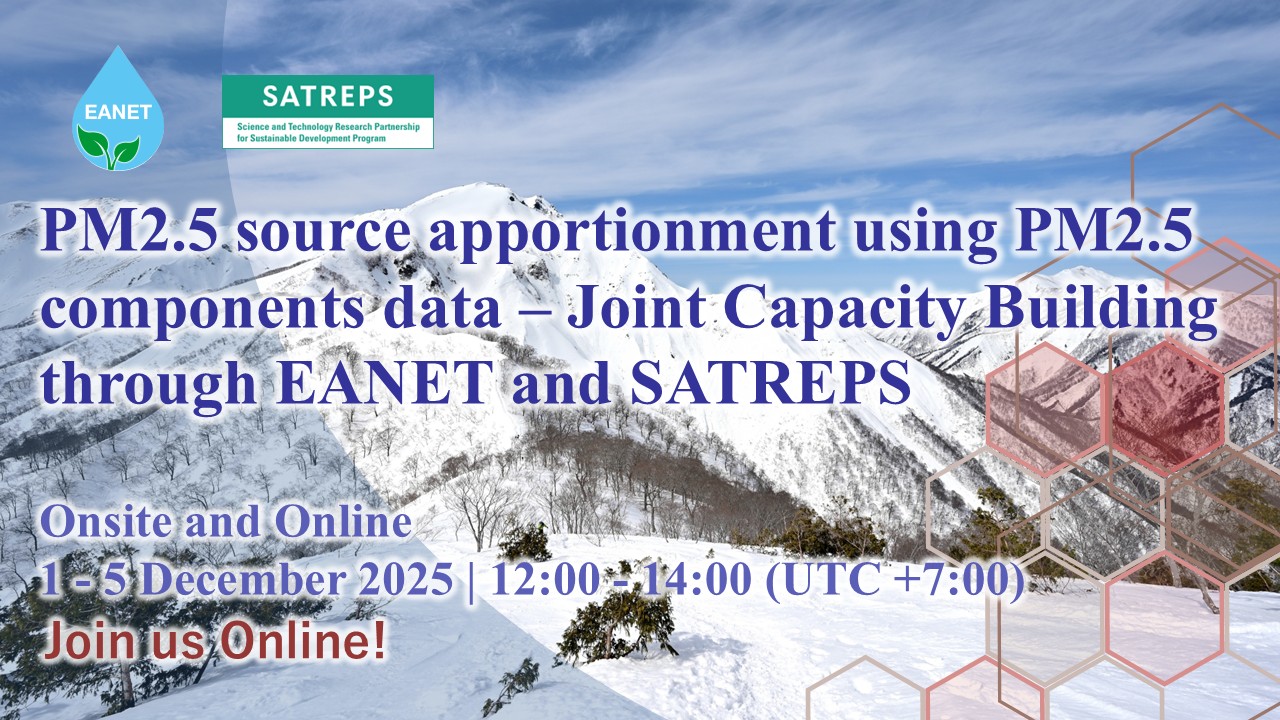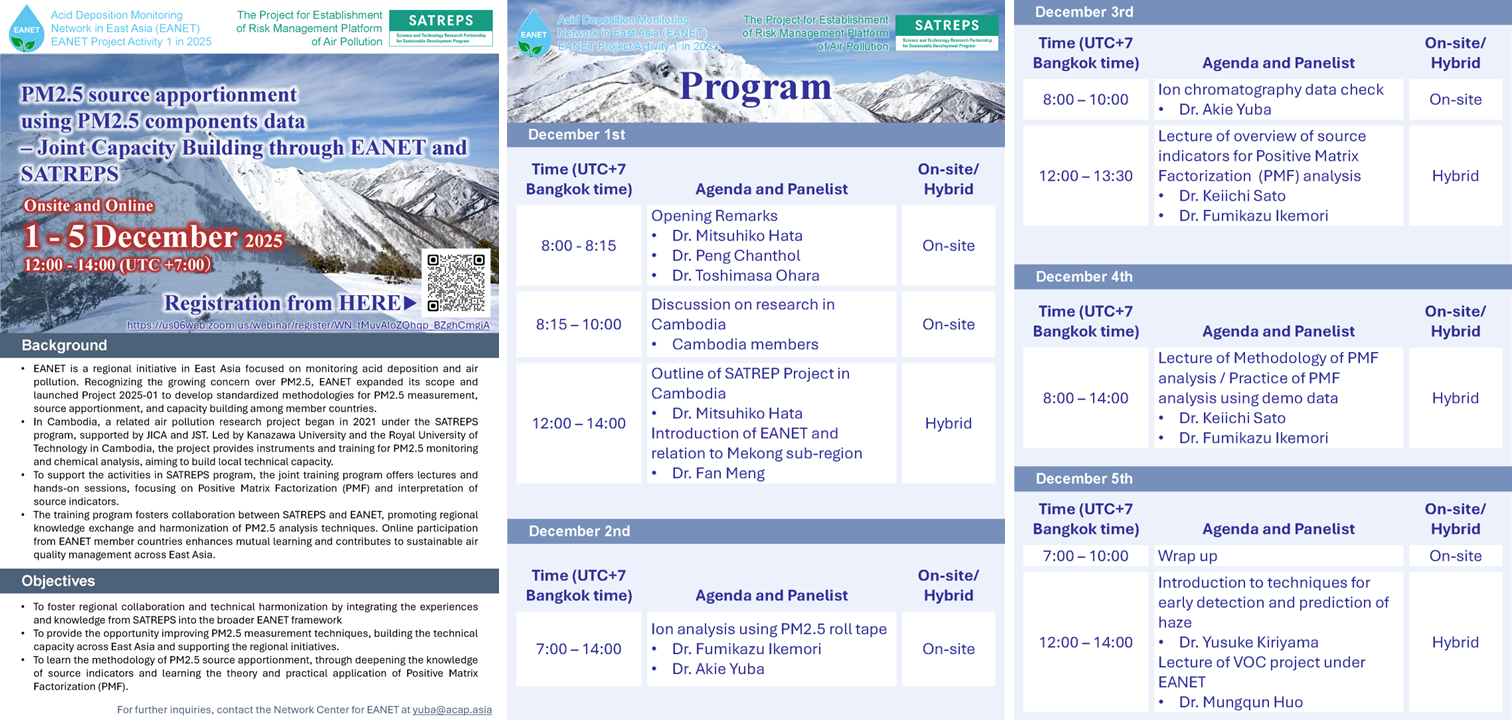
REGISTER LINK:
https://us06web.zoom.us/webinar/register/WN_tMuvAloZQhqp_BZghCmgjA
1. Background
EANET is an intergovernmental initiative that aims to promote cooperation among countries in East Asia to monitor and assess acid deposition and related air pollution. EANET has expanded its scope to include particulate matter (PM2.5), recognizing its significant health and environmental impacts. In 2025, the EANET Project 2025-01 was launched to develop comprehensive methodologies for PM2.5 measurement, source apportionment, and capacity building across EANET member countries. This project seeks to establish standardized techniques and strengthen local capabilities for sustainable air quality management.
The research project on air pollution in Cambodia commenced in fiscal year 2022 as part of the Scientific and Technological Research for Global Issues (SATREPS) program funded by Japan International Cooperation Agency (JICA) and Japan Science and Technology Agency (JST). The leading institute in Japan is Kanazawa University and the counterpart in Cambodia is the Institute of Technology of Cambodia. This project aims to address the air pollution issues in Cambodia by providing necessary instruments for monitoring and chemical analysis especially for particulate matter, and by capacity building for local practitioners.
Under the SATREPS program, installation of required instruments has been completed, and training sessions on instrument operation and analysis have been conducted in Cambodia. Air quality monitoring and data collection are ongoing under the SATREPS framework, and local researchers are now seeking to conduct source apportionment of PM2.5 using the obtained data.
To support this effort, the training program offers lectures and practical sessions on methodologies for identifying PM2.5 sources from observed data. It will focus on Positive Matrix Factorization (PMF) techniques and interpretation of source indicators.
Importantly, this training is designed to strengthen collaboration between the SATREPS project and the EANET Project 2025-01, which shares common goals in developing PM2.5 measurement techniques, source apportionment methodologies, and capacity building across East Asia. By inviting online participation from EANET member countries, the program promotes regional knowledge exchange and technical enhancement, leveraging insights and experiences from both initiatives. This synergy is expected to contribute to the development of standardized methodologies and sustainable air quality management practices in the region.
2. Objectives
✓ To foster regional collaboration and technical harmonization by integrating the experiences and knowledge from SATREPS into the broader EANET framework
✓ To provide the opportunity improving PM2.5 measurement techniques, building technical capacity across East Asia and supporting the regional initiatives.
✓ To learn the methodology of PM2.5 source apportionment, through deepening the knowledge of source indicators and learning the theory and practical application of Positive Matrix Factorization (PMF).
3. Agenda
Download the Concept Note and Program here.
For further inquiries, contact the Network Center for the EANET
